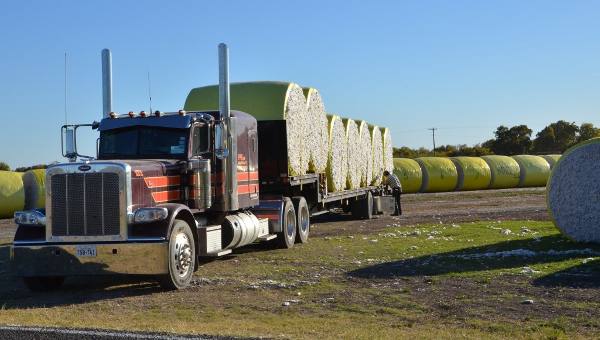November 14, 2012

There’s no way to summarize the Texas cotton harvest situation this year, according to a Texas A&M AgriLife Extension Service cotton expert.
“The Rio Grande had a pretty good year, and the upper Gulf Coast had a great year,” said Dr. Gaylon Morgan, AgriLife Extension state cotton specialist, College Station. “Right in between, with the Corpus Christi area, it was a complete disaster. And from what I’ve seen in the Rolling Plains, it is more or less the exact same thing.
“And the South Plains, more or less the same thing. From my conversations with the regional cotton specialist there, Mark (Kelley), it just depends upon whether you were under one of those timely scattered showers and how much irrigation water you had.”
In the Rio Grande Valley, yields were “about average,” according to producer reports, which was good news, considering the way the year started, he said. In the Coastal Bend area, nearly everything had to be zeroed-out by insurance adjusters and destroyed.
“But then you move 60 miles to the upper Gulf Coast, and they had one of the better crops they’ve had in many years in terms of yields,” Morgan said.
In the Rolling Plains, 60 percent to 70 percent of the crop was mowed down, including nearly all the dryland. Some of the irrigated fields there gave decent yields.
“From talking to irrigated producers out there, it depended upon how much water they had,” he said. “I saw some irrigated fields that looked horrible because the folks ran out of water and didn’t get any help from Mother Nature.”
On cotton fiber quality, 2012 ginned cotton has pretty much been an average year.
“One thing that really stood out, speaking of mainly South Texas, 2011 was a superb year for very low leaf grades and discounts,” he said. “And in 2012, we are back to the five-year average.”
About 25 percent of the cotton classed from the Corpus Christi Classing Office has been classed as high-micronaire cotton, according to Morgan.
“And that’s basically in line with what the Delta region is seeing too. Upper Gulf Coast had some good rainfall in July, which led to better yields and higher quality, but contributed to the high micronaire,” Morgan said.
More information on the current Texas drought and wildfire alerts can be found on the AgriLife Extension Agricultural Drought Task Force website at http://agrilife.tamu.edu/drought/.
You May Also Like




